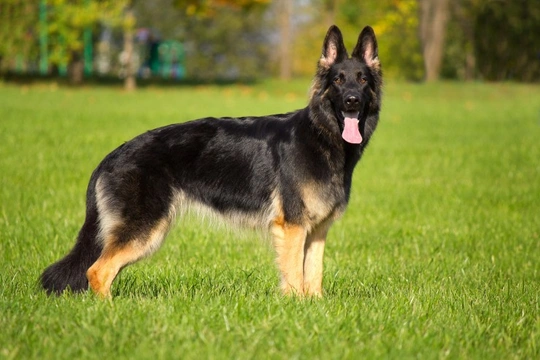Pets
Pets for studWanted petsBreedersAccessories & services
Knowledge hub
Support
Support & safety portal
Canine degenerative myelopathy
Canine degenerative myelopathy is a progressive condition of the canine spinal cord, sometimes also referred to as chronic degenerative radiculomyelopathy. It is thought to be connected to a gene mutation, and is more commonly seen in some breeds and types of dogs than others, as it is hereditary in transmission once the mutated gene is found to be present.
Dog breeds with elevated risk factors for canine degenerative myelopathy
Three dog breeds have a particular heightened risk of developing or passing on the gene mutation that causes canine degenerative myelopathy, and these are the German Shepherd, Boxer dog and Pembroke Welsh Corgi. Overall, however, 43 different breeds of dog have been identified as having the propensity to develop and pass on the gene mutation, including the Cardigan Welsh Corgi, Wire Fox Terrier and the Rhodesian Ridgeback.
Testing for the presence of the gene mutation
Because the condition is thought to be passed on due to the presence of a dominant gene mutation that leads to the condition, breeders of dogs with elevated risk factors for the condition may choose to test their parent dogs for the presence of the mutation before breeding. DNA testing can often identify the presence of the mutated gene, and results are ranked according to the following scale:
- “Normal” or clear, meaning that the gene mutation is not found to be present within the dog and the dog is not considered to be a carrier of the condition.
- “Normal/Abnormal,” which means that the dog in question carries one mutated copy of the gene, but not two. This indicates that while the dog is unlikely to be affected by the condition themselves, they will, however, be able to pass on the gene mutation to subsequent offspring.
- “Abnormal” or affected, indicating that the dog in question has two copies of the gene mutation present, and not only runs the risk of passing on the condition to any subsequent offspring, but is highly likely to develop the condition themselves.
What the test results mean for subsequent offspring
The risk involved is breeding from dogs that carry copies of the gene can be calculated according to the following formula:
- If neither parent dog carries the condition, the condition will not be passed on to subsequent puppies.
- If one parent dog carries the gene mutation but the other one does not, around half of the subsequent puppies will carry the condition but the other half will be clear.
- If both parent dogs carry the mutation, then around half of the subsequent puppies will also become carriers, a quarter will be unaffected, and the other quarter will develop the condition.
- If one parent dog is clear but the other parent dog is affected by the condition, all of the subsequent puppies will be carriers of the condition.
- If one parent dog is a carrier of the gene and the other parent dog is affected by the condition, around half of the puppies will be affected by the condition and the other half will be carriers of the condition.
- If both of the parent dogs are affected by the condition, then all of the subsequent puppies will also be affected by the condition.
Symptoms and onset of canine degenerative myelopathy
Canine degenerative myelopathy usually presents symptoms in later life, usually after the age of seven years old. Initially, the condition affects the back legs, leading to a gradual decline in muscle tissue that causes weakness, trouble rising, and a general lack of coordination. At this stage of the condition, canine degenerative myelopathy is often confused with arthritis, and the dog may begin to drag their rear paws behind them when they walk.
As the progression of the disease continues, it can lead to total paralysis of the back legs, issues with balance and walking, and incontinence. Dogs in the later stages of the condition may be unable to walk at all, or only able to move by dragging their back legs behind them while pulling themselves along by their front legs.
Ultimately as the disease spreads, the front legs will become affected as well, and the muscle tone of the rest of the body will begin to degenerate, leading to respiratory problems and a wide range of other issues.
How long the disease takes to progress to this stage will vary from case to case, and the more serious stages of the condition’s progression can take anything from a few months to several years.
Treatment and management of the condition
Unfortunately, canine degenerative myelopathy is incurable, and cannot be halted or reversed. It is also not possible to prevent the onset of the condition in the first place in dogs that carry the risk factors to develop the condition.
Up until the point at which the disease becomes unmanageable and adversely affects the dog’s quality of life to the point that euthanasia is the only option, various steps can betaken to keep affected dogs more comfortable and help to preserve their muscle tone for as long as possible.
Canine hydrotherapy, massage, physiotherapy and sufficient exercise of a type that the dog can comfortably manage can all help, as can taking steps to help the dog to be able to move around comfortably, such as providing ramps rather than stairs within the home. Using a sling or wheeled rear-leg cart for exercise can help the dog to stay mobile even when the condition begins affecting the hind legs, and encouraging affected dogs to keep moving by any appropriate means can help to prolong the viable quality of life of the dog.



